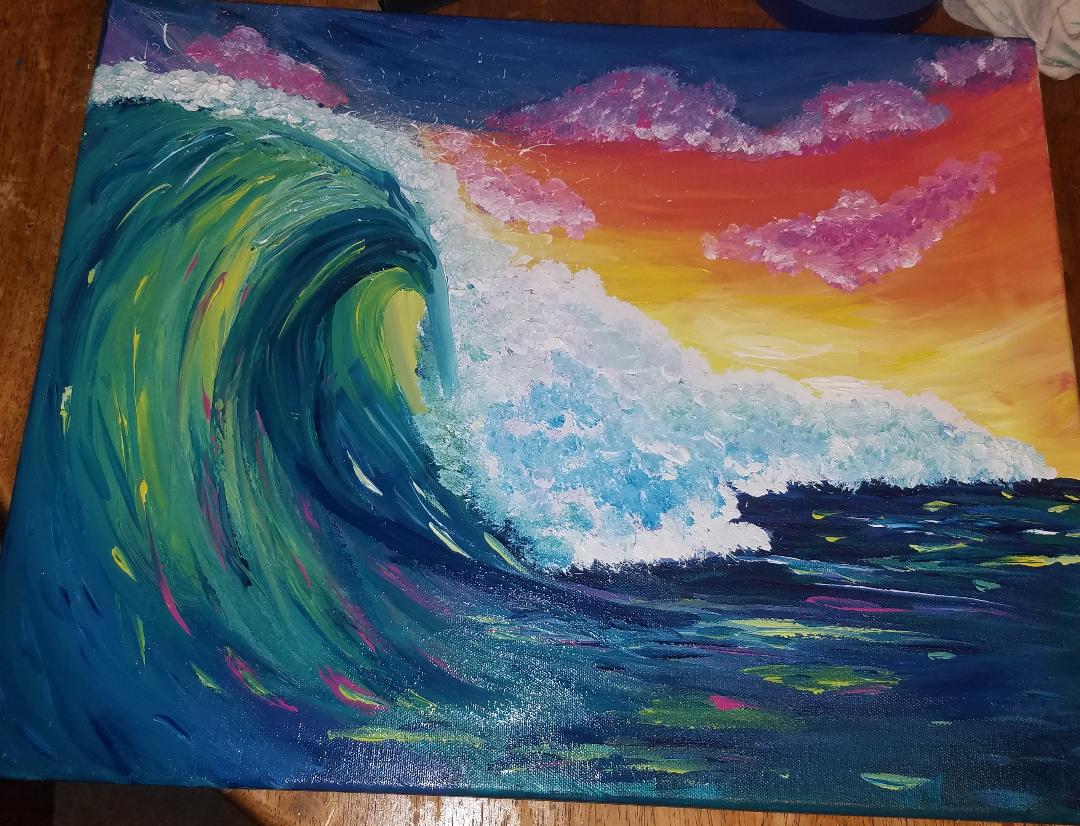This weekend I tried a new-to-me project and did a 3 Color painting of a wave. It’s an interesting technique that relies on blending primary colors (red/yellow/blue) to create all the other colors needed. I enjoy painting because 1) I honestly suck at visual art like drawing and painting and want to improve so 2) I have to focus when painting and it becomes very meditative. Learning a new skill isn’t everyone’s cuppa tea, but I enjoy improving on something, and painting is a nice break from writing.
But, because I’m me and I like patterns, metaphors, and books I couldn’t help but let my mind wander over to how acrylic paintings – which tend to be ugly up until the very last brush stroke – are so similar to book writing. Since NaNoWriMo is coming up in just a few short weeks I’m going to pull this all together in a quick mini-writing lesson. Because… why not?
If you’re interested in making this painting yourself check out the fabulous Cinnamon Cooney and her Art Sherpa youtube channel.
Phase 1: The Outline and Choosing your Colors
Before I could even paint my wave I had to pick which set of primary colors to use. There’s Primary Blue/Yellow/Magenta, or Magenta/Hansa Yellow/Pthalo Blue, or Cad Yellow/Cerulean Blue/Crimson… the different starting tones made different colors. You can see my test splotches in the top corners and the combinations further down.
Starting a story has a similar rhythm. First you need to decide what is going into the book. Are you writing a thriller or a romance? A Romantic thriller with a happy ending? A Thriller with romantic elements and a tragic end? Is your focus on one or two characters, or on the fates of thousands? Is the tone light or dark, somber or joyful, lively or a slow dirge into eternity? Knowing what you want helps you get the foundation of your story correct.
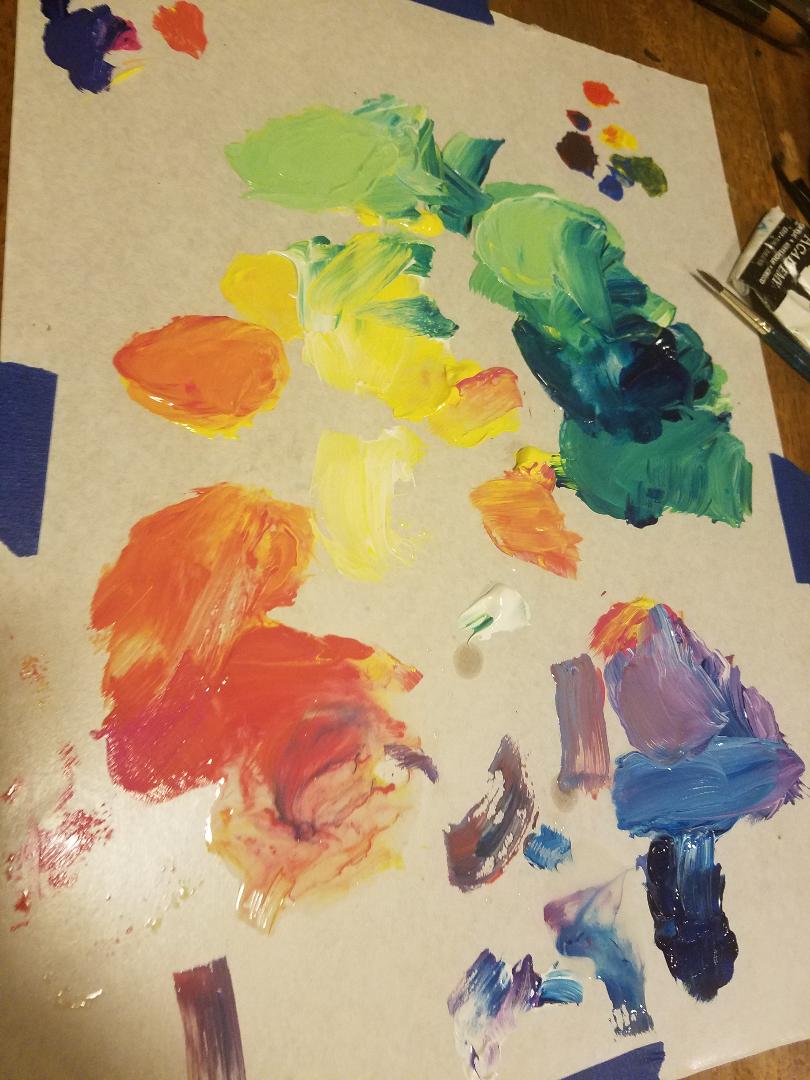
Phase 2: The Vague Outline of An Idea
The beginning. The end. Not middle visible? Ah, yes, that’s either this painting or anyone rough outline I’ve ever written. You should know where the book starts, and where you intend it to end, but the middle is always a murky mess when you begin. That’s fine. Draw in the ideas you know belong and figure out the rest as you go.
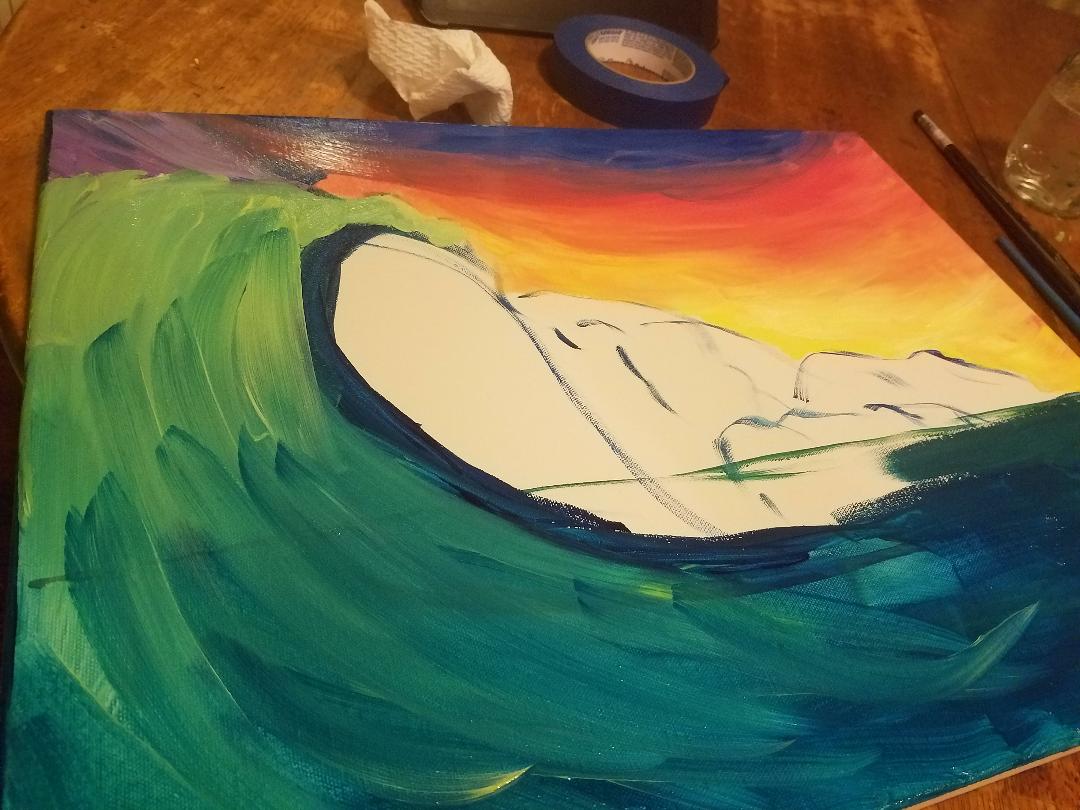
Phase 3: Color Blocking And The First Details
What do we have here? It’s a basic wave, you can see the shape of it now, and the middle has been filled with a purple blob that doesn’t really add much, but that’s okay. It’s there. This is the visual representation of a a rough draft. Everything is colored in. Technically, the wave has been painted. It’s not a blank canvas. You could probably sell this at a flea market for $5 and call it a day. It’s also painfully ugly and that ugliness makes too many people throw away their brushes (and their books) and give up in frustration. This looks nothing like the wave I envisioned! A rough draft doesn’t have the mental heft and weight of the book in my head! All is woe and sadness!
Okay, not really. This is a rough draft. The bones of a painting, or a story, are there. Now the fine details need to be added.
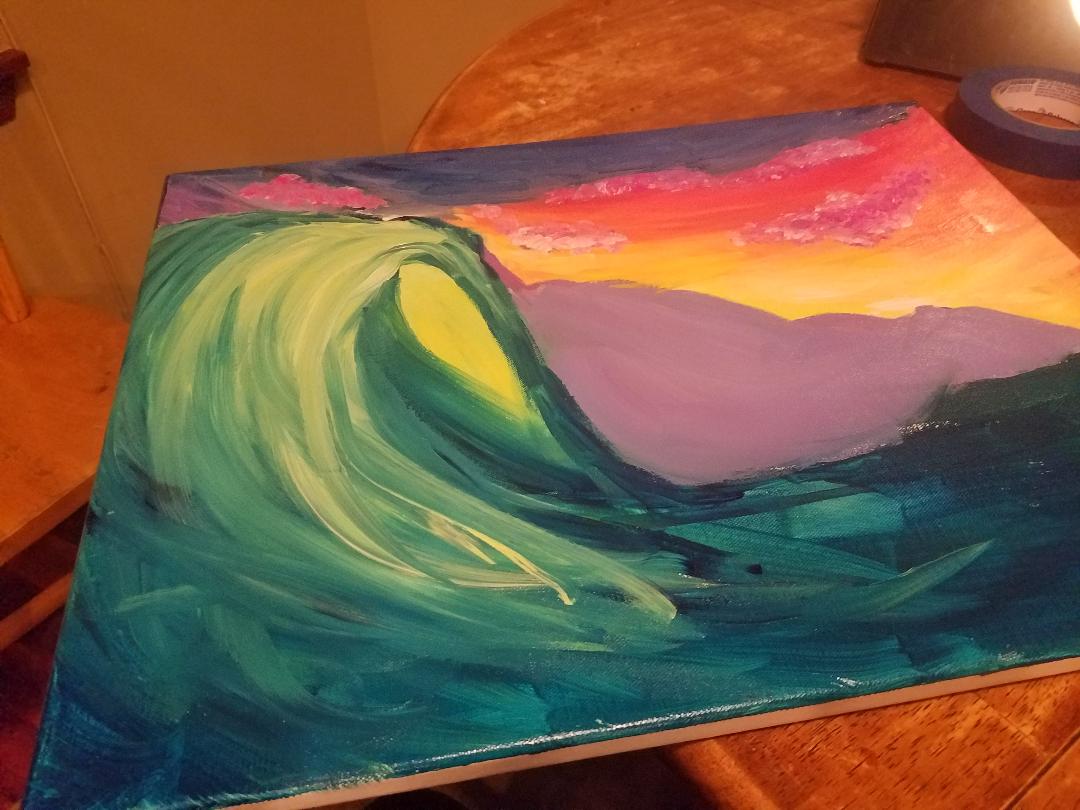
Phase 4: A Finished Work
What changed? I added details. The foamy white crest splashing everywhere, reflections of light, more clouds, more color, more paint… And, again, this is a decent enough painting. It could be called done and hung on the wall. The equivalent of a book is one that has a couple rounds of edits and gets a nod. For most books, this is where they hit the query trenches or the publishing trenches. A lot of effort and time has been put into the project and the painter (me!) or the writer (you!) should feel justifiably proud of the effort.
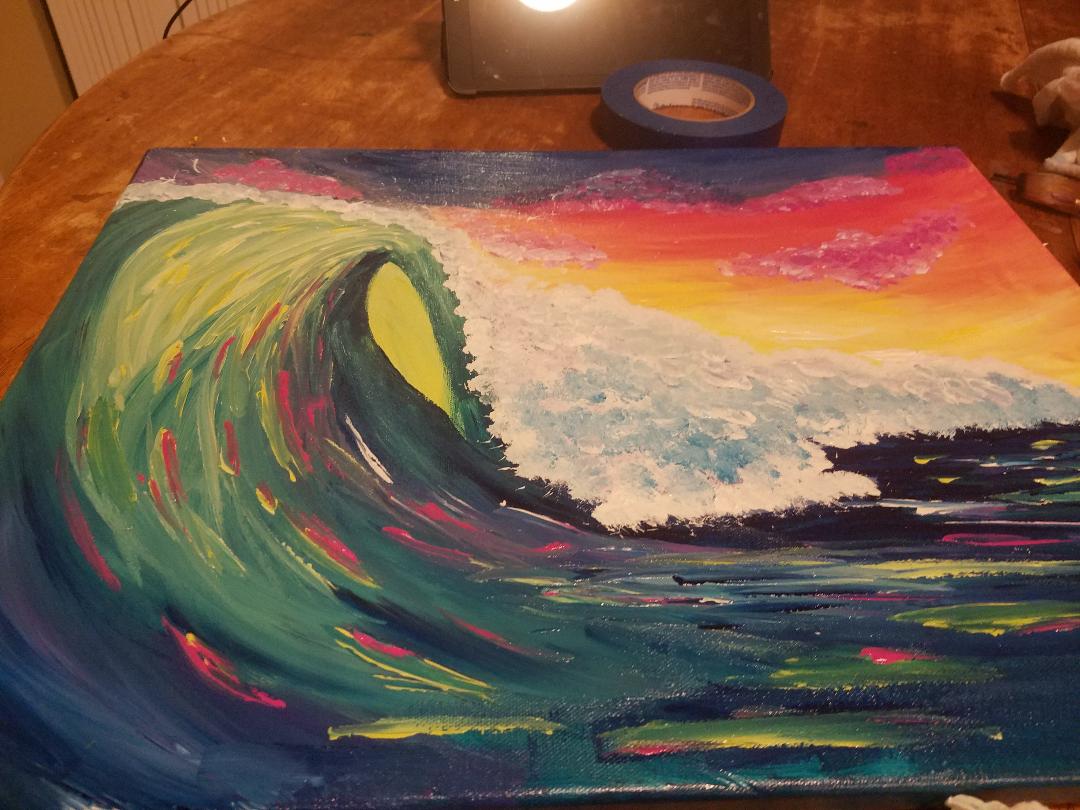
Phase 5: The Polished Work
I’ll be 100% honest here… I could do more with this painting. I quit last night because I’d already gone over the 2 hours I’d set aside for painting and I needed to get some sleep. There are little details I’m not super happy with, things I’d still like to change, and I am seriously tempted to repaint this next week and do better
And, while I’m being honest, I can say I’ve felt that way about every book I’ve ever published. Most authors feel this way. There’s always something you think of at the last moment. There is an art to letting go, to knowing when any further effort and embellishment will only add noise, not improvement. It’s a hard skill to learn, and you only learn it if you are willing to take the risk of failing. If you can’t take that risk, can’t let yourself fall, then you’ll never find the point where you can fly.
